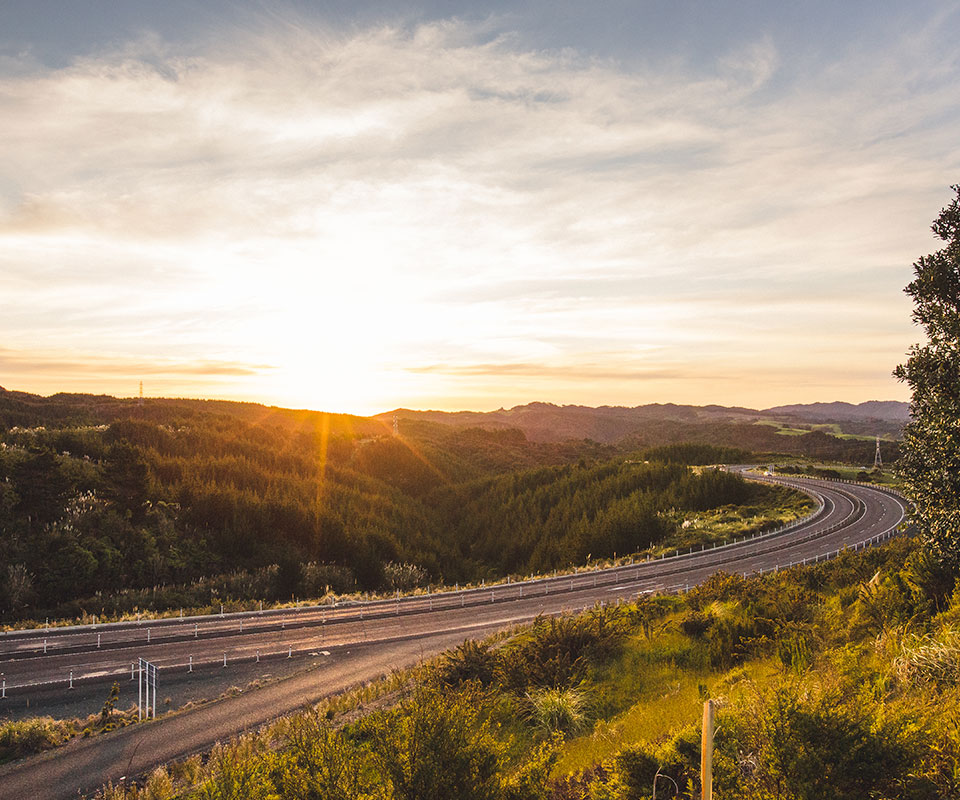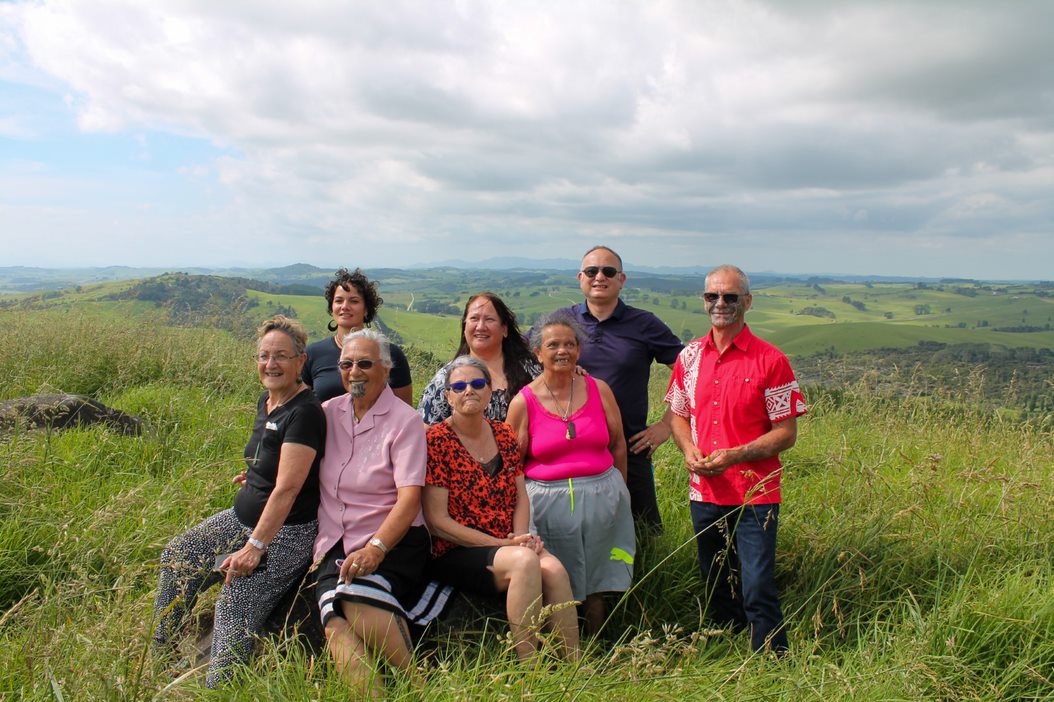
Te Kawa Waiora is an iwi, hapū and marae inspired research project, facilitated by Reconnecting Northland and academic, researcher and Mātauranga Māori (indigenous knowledge) expert Te Ahukaramū Charles Royal (PhD). It focuses on restoring the health and mauri of the Wairoa River and its tributaries, which make up a vast and complex river catchment.
The Wairoa commences at the confluence of the Wairua and Mangakāhia Rivers, just north of the settlement of Tangiterōria. It makes its way in a south-westerly direction toward the township of Dargaville where it flows into what is referred to today as the Kaipara Harbour. The river is afflicted by high sedimentation and other impacts of intensive farming and industry, as well as biodiversity loss and a loss of connection for local Māori that spans generations.
The goal of Te Kawa Waiora is to establish a “kawa” - a way of doing things - with the intent of protecting and restoring the Wairoa River and the communities that live alongside it. This includes several elements, explored in a Master Report for the project, such as;
This will be published in 2022.
Te Kawa Waiora is not only the current state of the river and its environs. It’s about how we got here, and what the future holds for the river, the land and its people. It explores deeply the sustained loss of connection for a people whose wairua (spirit) pulses with the rush of the awa (river).
Te Kawa Waiora takes place in a time when there is limited benefit to rehashing the problem of ecological decline that is so well known in this part of the country. Instead, it focuses on organising a response, and building capability among those who wish to go on responding.
This is one of its greatest achievements.
Fiona Kemp is a member of the TKW Research Committee. She has lived around the Kaipara for twenty-five years having married into a hapū that have resourced from the Kaipara for generations as ahi kā roa (continuous occupation).
Fiona talks about how Te Kawa Waiora was nothing like she imagined. She is talking about the use of research techniques and discovery using Mātauranga; permission to think about the issues affecting the awa from an indigenous perspective.
“Māori are researchers,” she says, “we are highly observant people.”
“It’s ingrained in our DNA, traditionally te taiao was a part of our everyday life, it spoke to us and showed us how we needed to behave.”
“External researchers have a habit of coming in and taking our mātauranga, and we never see or hear from them again. This research is different, from those who sit on the research committee and how they provoke my thinking, to the way it was conducted with our marae.”
“It stimulated our memories, triggering our indigenous understanding of the world and how we see it.”
The team involved with Te Kawa Waiora know what is expected of a “research” project and understand the importance of the project’s findings. However, it’s the process of discovery and reconnection for the participants that makes Te Kawa Waiora special.
By way of example, Fiona says, “I was partially raised in the city, but my husband is a complete hunter gatherer. He would say to me, “Sandflies are out,” and I’d ask what that meant, and he’d say, “It means it’s good for floundering.”
Fiona can’t say what the relationship is, exactly. Neither can her husband.
“It’s something he knows... but from my understanding, there would have been a kōrero, or karakia (prayer/chant) or a pūrākau (story) that would have told you about that relationship, and that’s lost.
Te Kawa Waiora has created pathways for hapū to retrieve forgotten kōrero and explore those stories in their own way, an authentic way, to create a new understanding.
The sadness and profundity in Fiona’s story about the sandflies and flounder lies at the heart of how Te Kawa Waiora was designed and undertaken.
It recognises that recapturing the fragmented and lost knowledge of hau kāinga is central to understanding and developing a long-term method of kaitiaki and management of the Wairoa River.
As well as archival and desktop research carried out by Robyn Kāmira and Hineāmaru Davies-Lyndon, this knowledge was drawn out in hui wānanga held throughout 2020 and 2021.
Tokotoko Retimana attended three of the hui wānanga with his son, Kelly. In his own words, this has been an important process for “recapturing kōrero that has been long forgotten.”
He speaks about the points touched on in the hui wānanga, “I had to sit down and think about it and go into my own little space in time and go back to the kōrero that I was brought up with. And it was quite interesting. The things that lay dormant there, that I forgot. This research tapped into it, and I’ve been able to bring it forward. Tell it and show it to whānau on the marae, which they didn’t believe until they actually physically saw it happen.”
Tokotoko is referring to Rangiriri, a taniwha whose home is the Northern Wairoa, and his journey up the river against the flow in the form of a log. With Rangiriri being one of the original protesters of the river’s deterioration, traditionally this has been a bad omen.
Tokotoko and his friend Barney were having a break by the river and saw a rakau (log) coming up the river against the tide. Seeing this Tokotoko asked “is there a manu on the rākau? A bird?” Barney replied “yeah, it’s dancing around at the top!”.
Seeing the bird, Tokotoko knew this was a sign.
“Something’s going to happen in Te Tai Tokerau, I don’t know what it is, but Barney, go over and have a karakia, because something's going to happen”.
The next day, the (2021 Kermadec Islands) earthquake happened, and another couple of days later, the three whales stranded in the Kaipara.
Tokotoko’s story highlights the relevance of the kōrero and the importance of reawakening what lies dormant.
“I compliment what your team are doing, it highlights what I need to teach my own whānau regarding our stories and knowledge. Water, the world will go to war for water. We must understand, we belong to the water, and the water to us. It is not something that can be legislated. What we are relearning is our connection to water for the future generations.” – Matua Tokotoko.
Te Kawa Waiora has created a broader understanding of the importance of story-based research, and the inequity inherent in modern, Western research approaches and the recording of history.
A series of research training workshops were held as part of the research and attended by a mix of hau kāinga and others who were interested in continuing the research under their own steam - taking ownership for their own processes of discovery, recognising the deep importance in recovering what often feels like it has been lost to time.
Kelly Retimana says of his experience, “I have been doing research for a few years now at a marae level, but nothing formal and I wasn’t sure how to formalise it either.”
“The type of research training provided fitted in with what I was needing. From the very basics, learning how to ask the right question, the question you are actually wanting. That is a key lesson for me, how to pose the right question, seems so simple, but it’s not.”
“The training component of the research really helped me to understand and apply the thinking and stay focused on the topic.”
Te Kawa Waiora has provided the mana whenua like Kelly the opportunity to find out about the other methods of research and collection of information. Learning from the research team how to connect the dots from what you might read in a document, to looking for taonga in a museum archive.
“I am going to do more research now, especially around whakapapa and connection to each of our marae and being a part of this training has helped me to know I can.”
Mina Henare-Toka shares her experience of the research training also.
“The concept that research creates ‘new knowledge’ was profound to me. We are looking into the past to help us create new knowledge. That was mind blowing, I just upskilled myself.”
Much like Kelly, Mina valued learning how to ask the right question, and now she applies those skills she has learnt to complete cultural values assessments in her mahi with Ngāti Whātua.
“At the moment I am in the observation phase, learning about my culture and reconnecting with it. I am in Te Pō, I have a little light, my knowledge, and I am walking around discovering more knowledge, that is the journey, to come out of Te Pō and be enlightened to go onto the next stage. Everything I have learnt through the wānanga and training has been more about the cultural growth and upskilling for me.”
“I fully enjoyed the wānanga and the whole programme, my only regret is missing out on some of it.”
Being connected with this process has helped mana whenua like Tokotoko, Kelly and Mina understand what they can do to continue this work. Although the project – like all projects – is subject to a finite process, the skills they have learned will continue to deliver value for their communities and the fire of discovery that has been lit will keep burning”
“It has been an honour and privilege for me to have been involved in this important research project. There is so much to say about it, about the extraordinary generosity of our tangata whenua communities, about their histories and experiences and about their solutions too!
Perhaps the most significant impact that the project has had upon me is to understand just how necessary, justified, and urgent tangata whenua led 'ground up' solutions and initiatives really are now. Everywhere we went, I heard and saw our marae communities seeking to advance Kaitiakitanga and being Kaitiaki. I also heard their frustrations at not being able to give 'full rein' to Kaitiakitanga in their areas, being instead constrained by a host of internal and external factors.
Kaitiakitanga is based upon the fundamental tangata whenua idea that humans are part of the natural world, not superior to it and that life is to be lived aligned to the natural world and not antagonistic toward it.
How different the world would be if human systems were built upon and gave full expression to this idea?”
- Te Ahukaramū Charles Royal (PhD)

